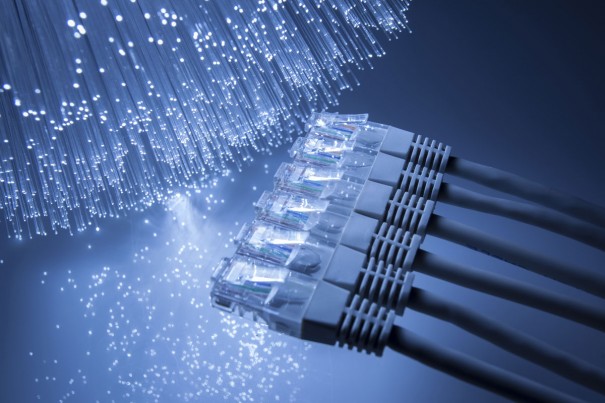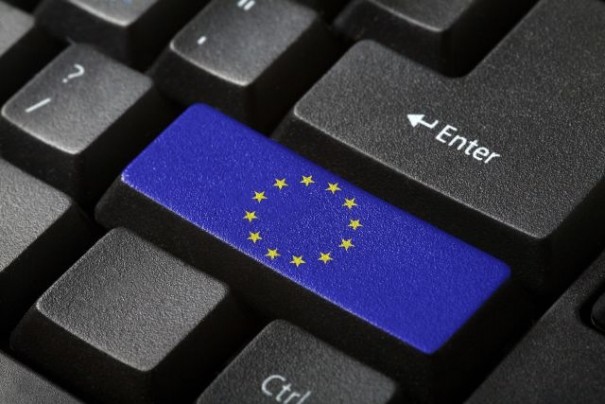El promedio de velocidad de conexión mundial aumenta un 26 % interanual
Según el informe sobre el estado de Internet del cuarto trimestre de 2016 de Akamai, las métricas de adopción de banda ancha registran aumentos interanuales de dos cifras.
Akamai ha publicado su informe sobre el estado de Internet del cuarto trimestre de 2016. Basándose en la información recogida en la Plataforma Inteligente de Akamai (Akamai Intelligent Platform), este informe proporciona una visión clave sobre estadísticas globales de Internet, como la velocidad de conexión, las métricas de adopción de la banda ancha, las interrupciones de Internet importantes, el agotamiento de IPv4 y la implementación de IPv6.
Puede consultar los datos y gráficos del Informe sobre el estado de Internet del cuarto trimestre de 2016 en el sitio del estado de Internet de Akamai y desde la aplicación State of the Internet de Akamai para dispositivos iOS y Android. Existen también discusiones sobre el Informe sobre el estado de Internet en la Comunidad de Akamai.
David Belson, editor del Informe sobre el Estado de Internet, destaca que “las velocidades de conexión a Internet siguen registrando tendencias positivas a largo plazo en todo el mundo, con crecimientos interanuales particularmente significativos en las métricas de adopción de banda ancha. Cuando Akamai publicó este informe por primera vez en 2008, la ‘banda ancha’ estaba establecida a partir de 5 Mbps, y la tasa de adopción de hace nueve años era de un 16 % en todo el mundo. Hoy en día, registramos una tasa de adopción de 15 Mbps del 25 % en todo el mundo”.
“Las tendencias positivas impulsan a las empresas a crear y distribuir experiencias más sofisticadas para audiencias más extensas en Internet, pero también hacen más apremiante la necesidad de que las organizaciones optimicen estas experiencias ante el sinfín de dispositivos conectados usados por sus clientes”, añade Belson.
El estudio pone de manifiesto que ha aumentado la velocidad de conexión media interanual en todos los países del estudio, a excepción de Rusia, que no ha registrado ningún cambio con respecto al año anterior. El menor crecimiento se ha producido en Lituania, con un 1,9 %, mientras que en Dinamarca se ha registrado un 29 %, lo que supone el mayor de todos.
Noruega ha mantenido una posición de liderazgo entre los países europeos en el cuarto trimestre de 2016, registrando un sólido crecimiento intertrimestral del 18 % en la velocidad de conexión media, que asciende a 23,6 Mbps.
27 de los 31 países de este estudio presentaron velocidades de conexión medias de 10 Mbps o superiores en el cuarto trimestre, frente a los 26 del trimestre anterior.
Por otro lado, seis países europeos aparecen entre los 10 principales países o regiones en términos de adopción de banda ancha de 25 Mbps: Noruega (nº 2), Suecia (nº 3), Dinamarca (nº 5), Suiza (nº 6), Finlandia (nº 8) y Letonia (nº 10). Los avances interanuales más significativos se registraron en Dinamarca (79 %), Suiza (75 %) y Noruega (62 %).
En cuanto a la adopción de la banda ancha de 15 Mbps en el cuarto trimestre, Noruega se ha mantenido a la cabeza entre los países europeos del estudio, seguida de Suiza, que ocupa el segundo lugar con una tasa de adopción del 54 %. Otros siete países (Suecia, Dinamarca, Países Bajos, Finlandia, Rumanía, Letonia y Bélgica) registraron un 40 % o más de direcciones IPv4 únicas conectadas a Akamai con velocidades medias superiores a 15 Mbps.
Con una tasa de adopción del 73 %, Suiza ha vuelto a posicionarse entre los primeros países europeos del estudio por la adopción de 10 Mbps, superando al tercer país de la lista, los Países Bajos. Los 31 países europeos objeto de estudio han registrado avances anuales en el cuarto trimestre, por ejemplo Croacia, que ha alcanzado una tasa de adopción interanual superior al doble (146 %).
Bélgica lidera la adopción de IPv6
En el cuarto trimestre de 2016, casi 807 millones de direcciones IPV4 únicas se conectaron a la Plataforma Inteligente de Akamai (Akamai Intelligent Platform), lo que supone una disminución de un 0,4 % en comparación con el cuarto trimestre de 2015.
El informe de Akamai muestra una importante caída en la actividad de asignación de IPv4 en el cuarto trimestre, con 6,4 millones de direcciones asignadas frente a los 16 millones del tercer trimestre.
Bélgica mantiene su sólida posición de líder mundial en adopción de IPv6, registrando un 47 % de sus solicitudes de contenido con doble apilado a Akamai mediante IPv6, lo que supone un aumento intertrimestral del 20%.
Los proveedores de servicios de telefonía móvil, inalámbricos y por cable han seguido registrando los mayores volúmenes de solicitudes IPv6. En Europa, TELENET (Bélgica), Kabel Deutschland (Alemania) y Sky Broadband (Reino Unido) volvieron a encabezar la lista, con un 65 %, 53 % y 50 % de sus solicitudes a Akamai de contenido con doble apilado realizadas a través de IPv6 en sus países, respectivamente.
Conectividad móvil
En el cuarto trimestre de 2016, Reino Unido volvió a ofrecer las velocidades medias de conexión móvil más rápidas, registradas en 26,8 Mbps.
Entre las regiones o países objeto de estudio en Europa, 19 contaron con una velocidad de 10 Mbps o superior (lo que supone un aumento frente a los 16 del trimestre anterior).
Situación en España
La velocidad de conexión media en España fue de 15,4 Mbps, lo que supone un incremento del 27% anual. Un 36 por ciento de las conexiones en España se realizaron a una velocidad superior a 15 Mbps, un incremento del 50% anual.
Por su lado, un 55 por ciento de las conexiones en España se realizaron a una velocidad superior a 10 Mbps, un incremento del 31% anual.
Un 90 por ciento de las conexiones en España se realizaron a una velocidad superior a 4 Mbps, un incremento del 2,4% anual. La velocidad de conexión media en redes móviles en España fue de 13,4 Mbps.
Europa impulsa la banda ancha
Las novedades publicadas en el cuarto trimestre de 2016 por Akamai constatan las tendencias positivas de crecimiento en adopción de banda ancha y velocidad:
- La Comisión Europea anunció un fondo para la conexión de banda ancha en Europa (CEBF) de 500 millones de euros para contribuir al cumplimiento del objetivo de la UE y que, en 2025, se pueda proporcionar acceso universal de 100 Mbps a todos los hogares y de 1 Gbps a todas las empresas.
- Suecia ha aumentado sus objetivos de conectividad y se ha propuesto ofrecer banda ancha de velocidad de gigabit al 98 % de su población para 2025.
- El gobierno alemán ha anunciado un proyecto dividido en cuatro fases para disponer de una infraestructura de gigabit en 2025, en el que la primera fase se centrará en proporcionar cobertura universal de 50 Mbps para 2018.
- El organismo regulador de telecomunicaciones de Reino Unido, Ofcom, ha publicado una propuesta que ha resultado en una obligación de servicio universal por parte del gobierno para un acceso de 10 Mbps en 2020.
Did you like this article?
Subscribe to us RSS feed And you will not miss anything.

















